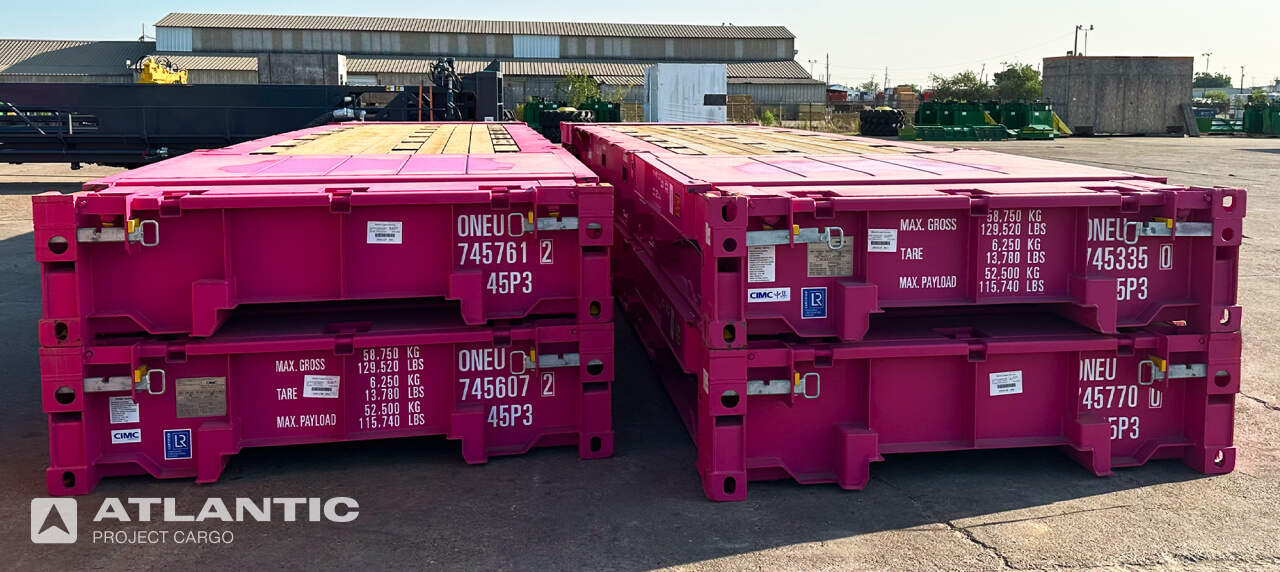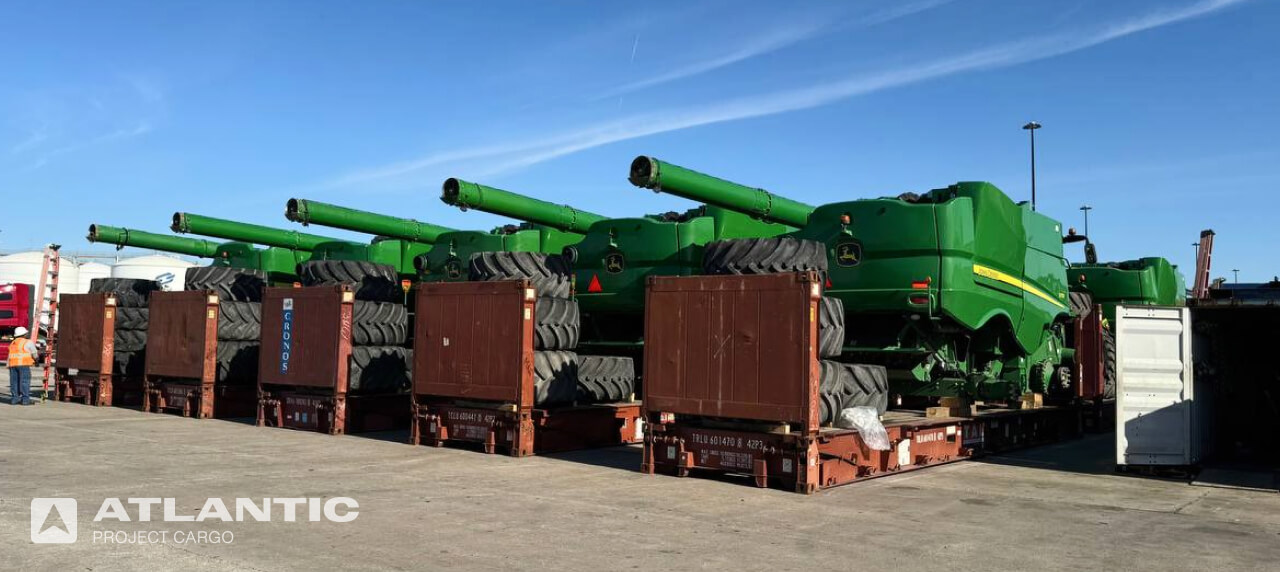
How do large boats or oversized agricultural equipment get shipped across continents? The answer isn’t a standard shipping container. In this comprehensive guide, we will have a look at the flat rack shipping containers, that are used for transporting bulky cargo. We’ll explore what they are, their different variations, and why they’re the perfect solution for those outsized shipping needs.
A Brief History of Flat Rack
While the standardized shipping container revolutionized global trade, there were always some cargoes left behind. Oversized or non-standard-shaped items posed a logistical nightmare. And that’s when flat rack containers came into play, a simple innovation with a rich history of tackling these challenges.
The exact origin of these containers is unclear, but their development likely paralleled the rise of the standard container in the mid-20th century. As shipping efficiency boomed, the need for solutions for project cargo became more obvious. Flat racks offered a way to leverage the existing container infrastructure for these unique items.
Early versions of these containers were likely basic adaptations of standard containers, with the sides simply removed. Over time, the design evolved, with two main variations emerging. We will talk about them further.
The widespread adoption of such containers coincided with the growth of international trade in bulky goods like machinery, vehicles, and prefabricated structures. These offered a secure and cost-effective way to move these items, further streamlining global commerce.
What is a Flat Rack Shipping Container?

As their name implies, these are essentially open-topped platforms with walls only at the ends. This unique design allows for the secure transportation of oversized or irregularly shaped cargo that wouldn’t fit within a traditional container. They offer a versatile and cost-effective alternative for a variety of logistical challenges.
Types of Flat Rack Shipping Containers
There are two primary configurations.
Fixed-End
This design features permanent end walls, providing a robust foundation for exceptionally heavy or bulky cargo.
Collapsible
These containers offer the advantage of collapsible end walls, allowing for more efficient storage of empty units during return journeys.
20-Foot Flat Racks
These containers offer a balance between manageable size and substantial weight capacity. Their typical dimensions are:
40-Foot Flat Racks
Designed for larger and heavier cargo, these containers provide ample space for substantial loads. Their typical dimensions are:
40-Foot High Cube Flat Racks
These flat racks are similar in length and width to 40-foot flat racks, but they’re taller. They have the following dimensions:
It’s important to note that these are general specifications, and some variations may exist between manufacturers or specific models. When selecting a flat rack shipping container for your oversized cargo, consulting with an experienced freight forwarder like Atlantic Project Cargo to ensure proper weight distribution and secure transport is crucial.
What Can You Ship in a Flat Rack Container?

The use of flat rack shipping containers is particularly good for the following types of cargo:
- Oversized machinery and equipment
Construction equipment, turbines, generators, and other large industrial machinery - Vehicles
Cars, trucks, buses, boats, and other vehicles that exceed standard container dimensions - Agricultural equipment
Tractors, combine harvesters, windrowers, spreaders, and so on - Long and narrow cargo
Pipes, steel beams, and other elongated items - Project Cargo with unique dimensions
The very essence of flat rack containers lies in their ability to handle cargo with unique dimensional challenges. Prefabricated housing units or oversized wind turbine blades
Flat Rack or Open Top Container: Which to Use?
Here’s a breakdown to help you pick the perfect container for your specific needs.
Flat Rack
It is ideal for extremely oversized or odd-shaped cargo that surpasses the limitations of both length and width in a standard container. Think of construction equipment, massive machinery, vehicles, and even long structures.
Advantages
Offers complete side access for easier loading and unloading of bulky items from any direction. Provides a sturdy base for heavy cargo due to its fixed or collapsible end walls.
Disadvantages
Generally more expensive than open top containers due to their increased structural complexity. May require additional securing measures for cargo that isn’t stable.
Open Top Container
This one is ideal for oversized cargo that primarily exceeds the height limitations of a standard container. This includes items like tall machinery, large spools of cable, or bulk materials like scrap metal or grain.
Advantages
More cost-effective option compared to flat racks. Offers some protection from the elements with its removable canvas top. Easier to stack empty containers for return journeys.
Disadvantages
Limited side access due to solid walls. Requires special lifting equipment for loading and unloading cargo from the top. Not suitable for very wide or oddly shaped cargo that can’t be secured within the container’s footprint.
Conclusion
Flat rack containers offer a versatile and secure solution for shipping oversized or oddly shaped cargo that wouldn’t fit within a standard container.
For over 20 years, Atlantic Project Cargo has been helping businesses navigate the complexities of international shipping. Our experienced team can assist you in selecting the right container type and ensuring your cargo arrives safely and securely at its destination. Contact us today to discuss your shipping needs.
FAQ
No, by definition, they do not have sides. They only have walls on the short ends for structural support. This open design allows for oversized cargo to be loaded and unloaded from multiple directions.
Yes, it typically uses a chassis for overland transportation similar to a standard container. The chassis provides a wheeled base that allows the container to be easily transported by truck.
Loading a flat rack container requires careful planning and specialized equipment due to the open design and potential size/weight of the cargo. Here’s a simplified breakdown:
- Preparation
- Positioning
- Securing
Due to the complexities involved, it’s highly recommended to consult with experienced professionals for loading and securing cargo in a flat rack container.
Flat rack containers typically don’t require security seals in the same way as standard containers.
Here’s why:
- Open Design
They lack the enclosed space of standard containers, making them unsuitable for traditional tamper-evident seals
- Cargo Visibility
The cargo itself is often visible, offering a level of inherent security
However, depending on the specific cargo and shipping regulations, there might be alternative security measures employed. These could include:
- Locking Mechanisms
Some containers have locking mechanisms on the end walls for added security
- Tamper-evident Tape
For valuable cargo, tamper-evident tape can be applied to specific areas, alerting authorities to potential tampering
Always consult with your experienced shipping company such as Atlantic Project Cargo or relevant authorities to determine any specific security requirements for your flat rack container shipment.
Read More


